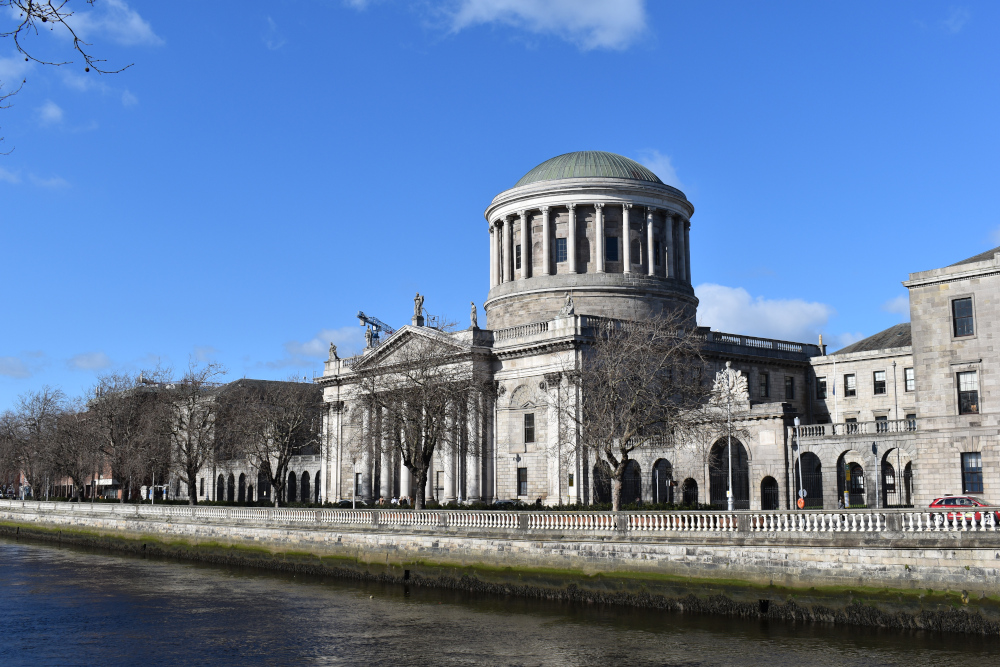High Court: No determination on novel issue of whether tree root intrusion excludes ‘non-feasance’ rule

The High Court has refused to determine whether South Dublin County Council would be liable for personal injuries resulting from the intrusion of tree roots into a footpath, but recognised that the judgments in UCC v ESB [2020] IESC 38 could have implications in such cases provided that a plaintiff could adequately prove their claim.

About this case:
- Citation:[2024] IEHC 243
- Judgment:
- Court:High Court
- Judge:Mr Justice Micheál O’Higgins
Delivering judgment for the High Court, Mr Justice Micheál O’Higgins determined that UCC v ESB potentially has implications for cases such as the plaintiff’s case, in that “‘Mother Nature’ had caused the difficulty; damage arose from a failure to act, and it could not be said the defendant created the source of the danger”.
However, the judge found that as the plaintiff’s claim failed due to evidentiary deficits, a “resolution of the wider issues will have to await another more suitable case”.
Background
The plaintiff claimed that on her way home from a party, her foot got caught in a one-inch deep hole in a crack on a footpath in Firhouse, causing her to trip and fall and to be injured. The defect was caused by the roots of a tree which were growing under the footpath, causing it to rise and crack.
The defendant denied liability on the basis that it had made no attempt to repair the path prior to the plaintiff’s fall, and so could benefit from the non-feasance or ‘pure omission’ rule. The plaintiff alleged that this defect should have been repaired by the defendant, as tree root intrusion was a gradual and foreseeable phenomenon that should be maintained against.
The plaintiff made a novel submission that as the defect was caused by tree root intrusion, this excluded the operation of the non-feasance rule.
The High Court
The High Court noted that this was a test case concerning whether the non-feasance rule applies to trees on a public road, there being no Irish authority on same.
Having considered the parties’ evidence and the jurisprudence on misfeasance and non-feasance, Mr Justice O’Higgins considered that one fundamental issue fell for determination — whether the defendant owed a common law duty of care to the plaintiff to repair the footpath.
The judge considered UCC v ESB [2020] IESC 38 as key to the question as to the existence of a duty of care, noting that the case “potentially has implications for the legal issues the court is concerned with here because, in both cases, ‘Mother Nature’ had caused the difficulty; damage arose from a failure to act, and it could not be said the defendant created the source of the danger”.
Mr Justice O’Higgins observed that the correct starting point was the test in Glencar v. Mayo County Council (No. 2) [2002] 1 IR 84: “Under the Glencar test, the basis for establishing a duty of care requires that the damage suffered was both foreseeable and not unduly remote from the acts causing it. In addition, a court must consider it just and reasonable that a duty of care be extended in all the circumstances of the case…”
Returning to UCC v ESB, the High Court stated that in finding that ESB owed a duty of care in the manner in which it operated the dams which caused the River Lee to burst its banks and to flood properties downstream: “The Supreme Court ultimately held that the ESB did owe a duty of care under ground (iii) above, namely their conclusion that the ESB had a special level of control over the source of the danger (the River Lee)…”
Mr Justice O’Higgins considered UCC v ESB as authority for the recognition of “a duty of care to prevent harm from a danger caused independently of the wrongdoer where the wrongdoer has a level of control over the danger in question which is substantial and not tangential. That level of control does not have to arise from a legal power.”
The judge continued that “in assessing whether any such duty of care arises in the circumstances of any individual case or type of case, a court must assess (a) whether there is a reasonable relationship between any burden which would arise from imposing such a duty of care and the potential benefits to those who may be saved from the danger in question; and (b) whether it is possible to define the duty of care in question with a sufficient, but not absolute, level of precision so as to avoid imposing a burden which is impermissibly vague and imprecise…”
Noting the differences between the factual context before him and that before the Supreme Court in UCC v ESB, Mr Justice O’Higgins opined: “Nonetheless, the Court’s analysis undoubtedly has implications beyond dam cases. This is because all three judgements, before reaching their conclusions, went back to fundamental principles of tort law.”
Prior to undertaking a consideration of whether UCC v ESB had an effect on the non-feasance defence raised by the defendant and the legal consequences which might follow, the court considered it necessary to determine whether the plaintiff had established liability in her case on the issues of where and how she fell. Despite finding the plaintiff to be an entirely honest and credible witness, the court was not satisfied that she had proved her claim.
In particular, Mr Justice O’Higgins found it “unsatisfactory” that although the plaintiff’s husband and two of her neighbours were present at the time of her fall, none of them had given evidence. Recognising that there was a gap in the chain of causation, the judge specified that “the absence of any other factual witnesses on the plaintiff’s side does mean that no other witness was able to assist the court on where the plaintiff fell and how she fell. This in turn meant that important evidential gaps left by the plaintiff’s own evidence were left unfilled.”
Declining to decide the legal issues, the court firstly relied upon the principle of “judicial restraint” which dictates that the court should “refrain from providing advisory opinions on theoretical propositions of law”, and secondly, the court noted the Supreme Court’s emphasis in UCC v ESB that the Glencar test is context-specific, finding that “the third limb of the test in particular — whether it is just and reasonable that the law should extend a duty of care on the defendant for the benefit of the plaintiff — is a question to be considered on a relationship and case by case basis, based on the particular circumstances of the case. To my mind, this reinforces the appropriateness of the court staying its hand on determining the legal issues.”
Conclusion
Accordingly, the High Court dismissed the plaintiff’s claim.
Best v. South Dublin County Council [2024] IEHC 243





